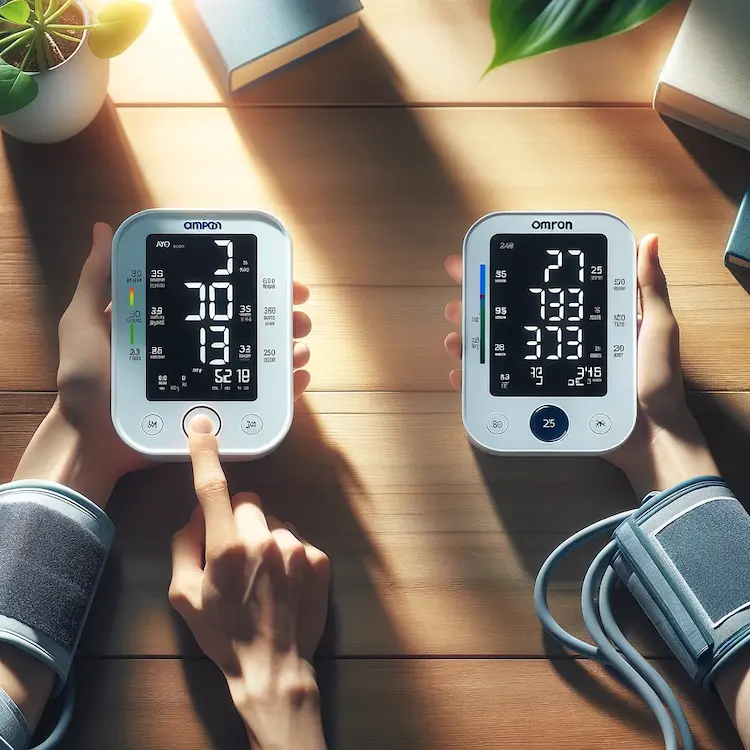Blood pressure monitors are essential tools for individuals managing hypertension or other cardiovascular conditions. Omron, a leading name in healthcare technology, offers various home-use blood pressure monitors, including the Omron X3 and Omron M300. These devices are designed for reliability, ease of use, and accuracy, but which one offers a better design for everyday use? This article compares the two models in terms of usability, accuracy, comfort, display readability, and additional features, helping users make an informed decision.
Hypertension affects 1.28 billion people worldwide, with many unaware of their condition. Regular monitoring helps in early detection, reducing the risk of heart attacks, strokes, and kidney failure. Reliable, easy-to-use devices encourage frequent tracking and better management of cardiovascular health.

| Feature | Omron X3 | Omron M300 |
|---|---|---|
| Design & Build | Compact, modern | Bulky, traditional |
| Cuff Type & Size | Intelli Wrap Cuff (22–42 cm) | Standard Cuff (22–32 cm) |
| Display & Readability | Large, high-contrast | Basic LCD, smaller font |
| Memory & User Profiles | 2 users, 60 readings each | 1 user, 30 readings |
| Accuracy & Validation | Clinically validated (ESH) | Clinically validated |
| Irregular Heartbeat Detection | Yes | Yes |
| Ease of Use | Simple one-button operation | One-button operation but smaller screen |
| Power Source | Batteries (optional adapter) | Batteries only |
| Connectivity Features | No smartphone connection | No smartphone connection |
| Price Range | Mid-range | Budget-friendly |
The Omron X3 has a sleek, modern design with a compact body, making it easier to store and handle. It is lightweight and features an intuitive control layout. The Omron M300, in contrast, is bulkier and has a more traditional build. While both are made from durable materials, the X3 offers a more user-friendly form factor.
The cuff type significantly affects the ease of use and accuracy. The Omron X3 includes an Intelli Wrap Cuff (22–42 cm), which ensures consistent, accurate readings regardless of placement. The Omron M300 uses a standard cuff (22–32 cm), which may not fit larger arms comfortably.
A clear, high-contrast display is crucial for quick readings. The Omron X3 has a large, backlit LCD with bold, easy-to-read numbers, while the M300 features a smaller, basic LCD without backlighting. This makes the X3 more user-friendly, especially for seniors or those with poor eyesight.
If multiple people in the household need to track their readings, the X3 is the better option.
Both devices are clinically validated and include irregular heartbeat detection. The X3’s Intelli Wrap Cuff enhances accuracy, ensuring consistent placement and better readings. The M300’s traditional cuff requires precise positioning, which could lead to inconsistent results if placed incorrectly.
Having an AC adapter option makes the X3 more versatile, especially for frequent use.
The Omron M300 is a budget-friendly option, making it suitable for users looking for a simple, no-frills monitor. The Omron X3 costs slightly more but offers a better design, storage, and accuracy.

The Omron X3 outperforms the Omron M300 in almost every category, making it the better choice for everyday use. It is easier to read, more comfortable, offers better memory storage, and provides a more accurate reading experience. However, if budget constraints are a priority, the Omron M300 remains a reliable, basic option.